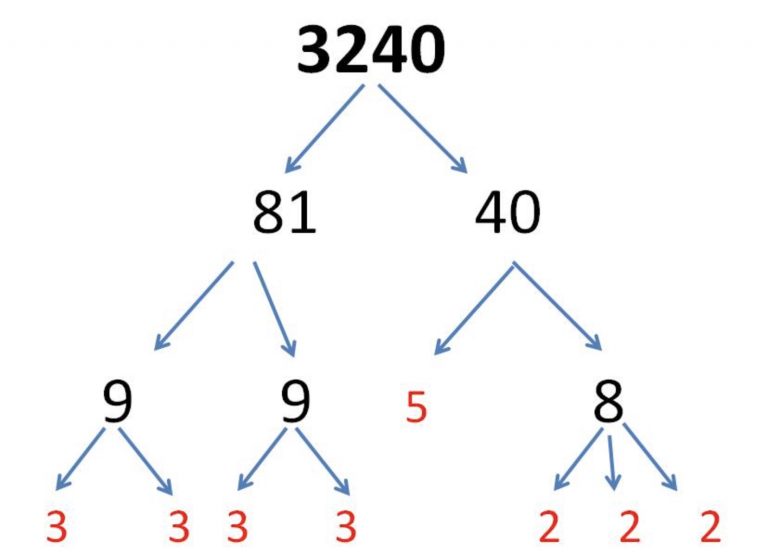Prime factorization is a process of representing a number as a product of its prime numbers. Prime factorization is also known as integer factorization or prime decomposition. This method helps find out which prime numbers multiply together to form a number & it is also useful in finding the factors of composite numbers, LCM & HCF of any given set of numbers.
One of the major applications of prime factorization is cryptography. Cryptography is a practice of protecting digital information and communicating it through the use of codes. It is a useful technique practiced by computer programmers to build a unique code with numbers. Such kind of encoded information is quite convenient for computers to process and transfer securely.
Children usually study the concept of prime factorization in grades three through five. By grade six, a child should solve problems based on factors, multiples, prime factorization, and prime numbers. For this reason, it is imperative to provide a robust foundation of prime factorization to children from the start. It will enable them to work interchangeably between factors and the numbers they generate.
Simple & Easy Methods to Learn Prime Factorization:
Learning prime factorization of a large number is presumed as an important skill that appears to be a little complex for children to learn. Solving such kind of complex problems requires a step by step thorough understanding of the process. There are two main prime factorization methods through which we can quickly learn to find the factors of a number:
- Division Method.
- Fraction Tree Method.
Prime Factorization by Division Method:
The division method is one of the simplest ways to get the prime factors. Using the division method, you can easily find the prime factor by dividing the given number by the smallest prime number. Here are the steps to learn prime factorization through the division method:
- Divide the given number by the smallest prime number that divides the number exactly.
- Proceed again by dividing the quotient with the smallest prime number and repeat it until the quotient is 1.
- Once the quotient becomes 1, multiply all the factors to get the prime factor of the number.
Prime factorization by Factor Tree Method:
One of the most common methods for learning prime decomposition involves the formation of factor trees. Factor trees enable students to visualize the multiplicative breakdown of a number. It also helps them to develop a conceptual understanding of prime factorization. Here are the steps to learn prime factorization through the factor tree method:
- Write the given on the top to use it as the root of the factor tree.
- Break down the number in the pair of its factors and consider them as the tree’s next branches.
- Repeatedly factorize the composite factors to put down the factors pairs further as the branches.
- Continue the process until you get the prime factors of all the composite factors.
Conclusion:
The concept of prime factorization finds its application in various fields at different levels. As the child advances to higher grades, they need to study more complex topics based on it. Attaining the conceptual clarity of prime factorization can help them gain an in-depth understanding of these topics.
Children often rely on memorizing various mathematical concepts rather than understanding the underlying principles leading to poor subject knowledge and loss of interest in the subject. When children learn math through reasoning and logic, they gain conceptual fluency. Cuemath helps kids to understand math logically by strengthening their reasoning skills. Sound conceptual knowledge of each topic allows children to develop connections between various math topics, forming a strong math foundation.


0 Comments